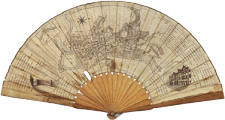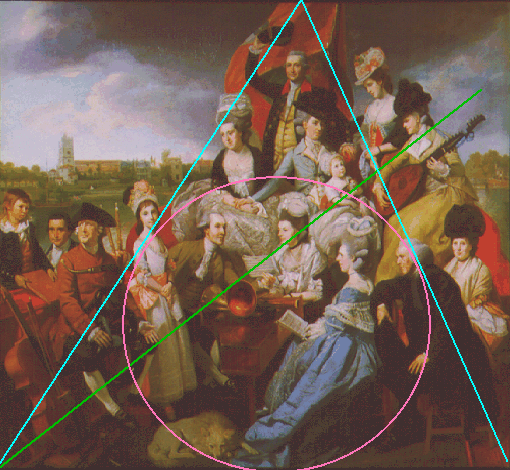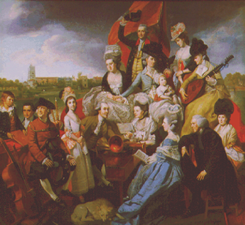Zoffany’s Sharp Family
- Pictorial Interpretation
- The composition of the painting
- Perspective effect
- Musical comment
- Musical instruments
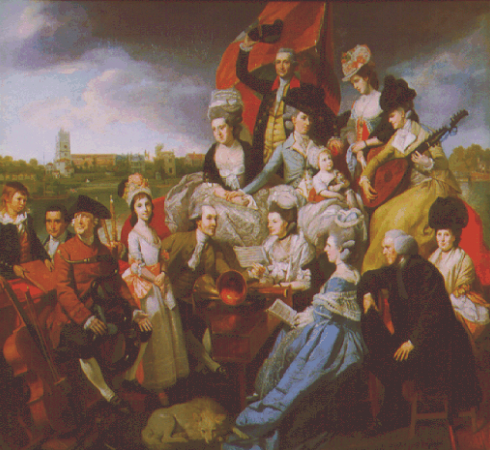
- John Sharp , )
Pictorial Interpretation
This painting, probably commissioned by William Sharp (1729-1820), surgeon to King George III, represents the musical pastimes of the Sharp family, who played chamber music on the Thames from the 1750s.
Its elaborate composition illustrates the transition between private music parties and public concerts in eighteenth-century musical life. The private world of the barge opens into that of an invisible audience listening from the bank to the open-air concert, a fashion set by Handel’s Water Music.
The instruments depicted reveal the affluence of this family of amateur musicians. The inclusion of a harpsichord in the middle is however more symbolic than realistic.
The composition of the painting
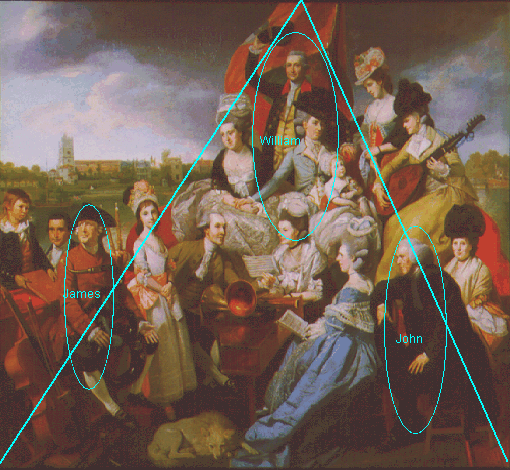
(1) The most obvious construction of this conversation piece is triangular or conical.
At the top of the pyramid a flag bearing the arms of the Sharp family is floating, underneath which stands William, surgeon to King George III, dressed in Windsor blue. His two brothers, the clergyman John and the ironmaster James, are on both sides at the base of the triangle. In this ternary structure, each of the three brothers is accompanied by his wife.
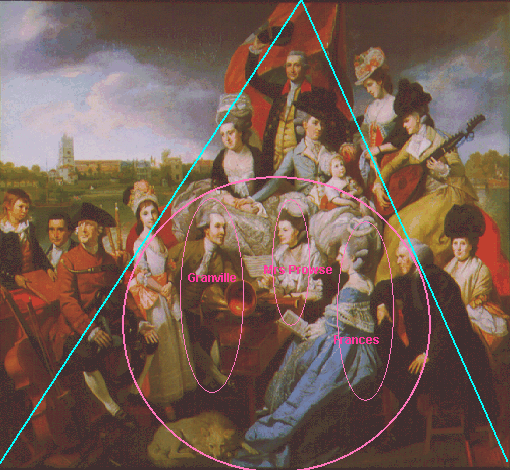
(2) The triangle circumscribes a circle which links three young brothers and sisters (to the left the youngest, Granville, a famous abolitionist, to the right the second daughter Frances and to the centre Mrs. Elizabeth Prowse, née Sharp).
The circle also contains three instruments (the harpsichord, which Mrs. Prowse, in her diary, says she would if need be use to play the thorough-bass, William’s horns, and two clarinets).
These last two instruments would be used in one of the possible identifications of the music played in the painting, Handel’s Overture.
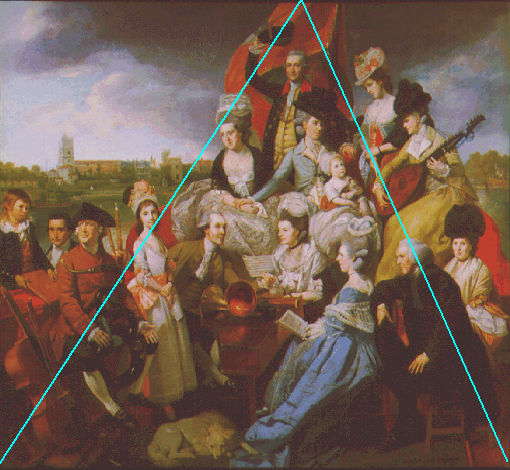
(2) The triangle circumscribes a circle which links three young brothers and sisters (to the left the youngest, Granville, a famous abolitionist, to the right the second daughter Frances and to the centre Mrs. Elizabeth Prowse, née Sharp).
The circle also contains three instruments (the harpsichord, which Mrs. Prowse, in her diary, says she would if need be use to play the thorough-bass, William’s horns, and two clarinets).
These last two instruments would be used in one of the possible identifications of the music played in the painting, Handel’s Overture.
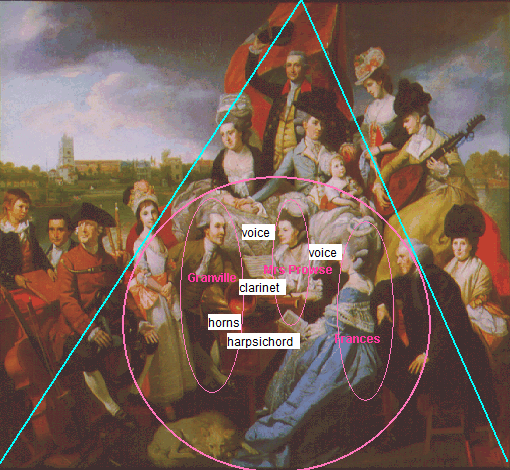
(2) The triangle circumscribes a circle which links three young brothers and sisters (to the left the youngest, Granville, a famous abolitionist, to the right the second daughter Frances and to the centre Mrs. Elizabeth Prowse, née Sharp).
The circle also contains three instruments (the harpsichord, which Mrs. Prowse, in her diary, says she would if need be use to play the thorough-bass, William’s horns, and two clarinets).
These last two instruments would be used in one of the possible identifications of the music played in the painting, Handel’s Overture.
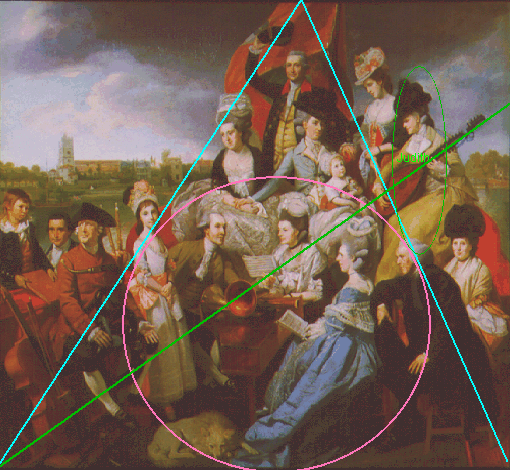
(3) Another line, parallel to the direction of the boat on the Thames, links the continuo instruments: the handle of the lute played by another sister, Judith, to James’s serpent and to the cello , crossing the instruments in the centre on its way.
Flageolets are in the background.
The latter instrument would be used in one of the possible identifications of the music played in the painting, Philibert Delavigne’s ’Sonate en ré mineur pour flageolet.
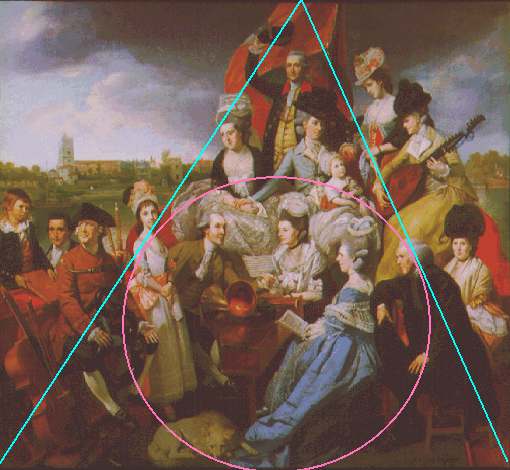
(3) Another line, parallel to the direction of the boat on the Thames, links the continuo instruments: the handle of the lute played by another sister, Judith, to James’s serpent and to the cello , crossing the instruments in the centre on its way.
Flageolets are in the background.
The latter instrument would be used in one of the possible identifications of the music played in the painting, Philibert Delavigne’s ’Sonate en ré mineur pour flageolet.

(3) Another line, parallel to the direction of the boat on the Thames, links the continuo instruments: the handle of the lute played by another sister, Judith, to James’s serpent and to the cello , crossing the instruments in the centre on its way.
Flageolets are in the background.
The latter instrument would be used in one of the possible identifications of the music played in the painting, Philibert Delavigne’s ’Sonate en ré mineur pour flageolet.
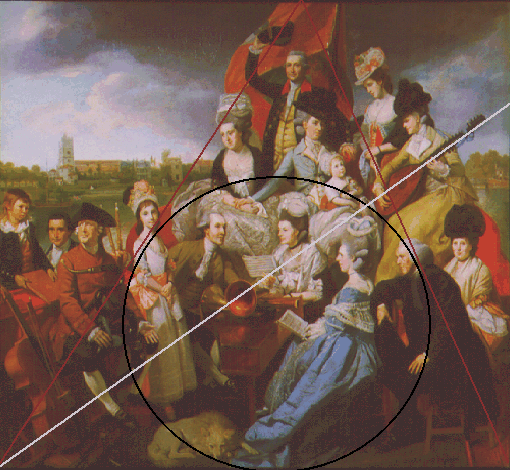
(4) A manuscript in the Gloucestershire archives underlines the overall ternary composition of the painting, which in spite of its dynamic structure met with mitigated approval when first exhibited at the Royal Academy in 1781.
Perspective effect
If Zoffany had consistently used foreshortening both for the keyboard instrument and the figures, the characters behind the keyboard, being more remote, would be much smaller than those in the foreground, which would give them an inferior status.
To avoid this, Zoffany has ignored perspective effect for the human figures. He has combined two projection effects.
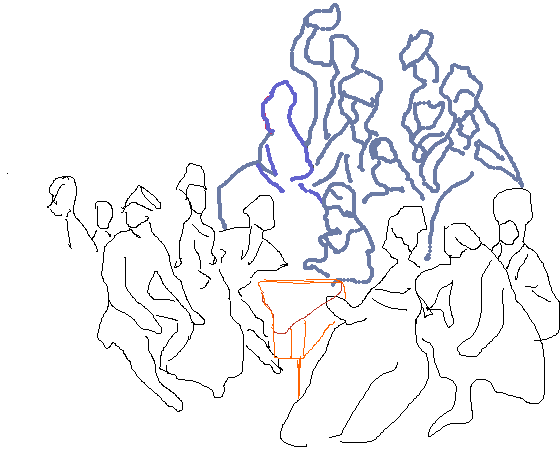
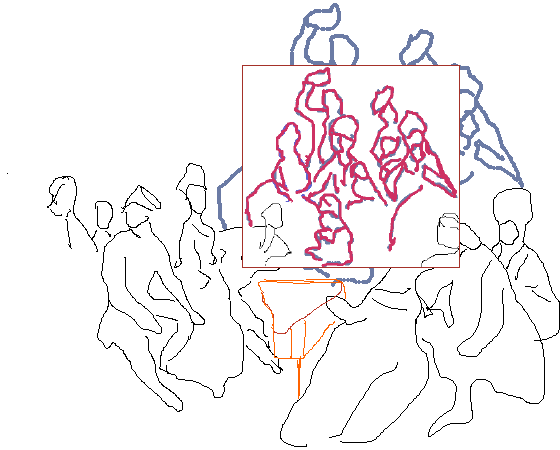
Musical comment
The musical pieces that the party might be playing have been variously interpreted.
Among possible suggestions are:
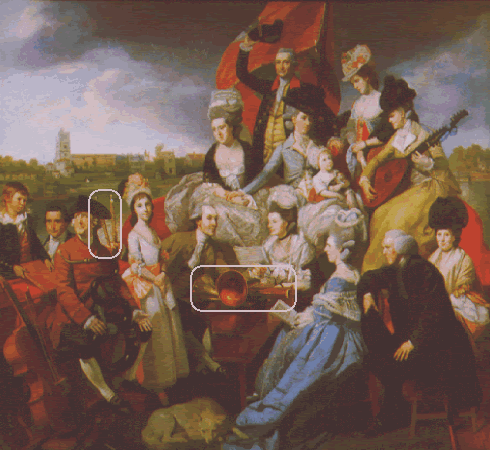
- clarinets ,
- flageolets , )
- Philibert Delavigne, Sonate en ré mineur pour flageolet
- viole de gambe et guitare baroque’, Sonates pour la Musette, Vielle, Flûte-à-bec, avec la Basse-Œuvre, dans Barockmusik für Blockflöte aus Italien, England und Frankreich, par Conrad Steinemann (Claves,1986, CD 50-8103).
- Handel’s Overture 1740-41
- for two clarinets and horn (as bass accompaniment)
Sonate e concerti per il corno da caccia, Claude Maury and the Ricercar Consort (RIC 049027). Allegro
In this case the flageolets are playing
It is a plausible choice since it is a pastoral tune.
It is also a plausible choice since the sound of the clarinet is suitable for open air music and reverberates well on the water.
Musical instruments
Clarinets and horns are shown in Zoffany’s painting of the Sharp family.
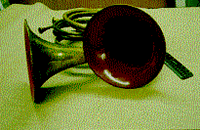
- Horns with crooks
- Hofmaster, London, ca. 1750
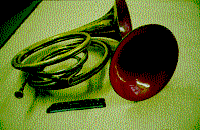
- Horns with crooks
- Hofmaster, London, ca. 1750
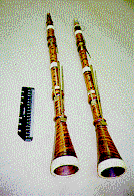
- Bb clarinets
- George Miller, London ca. 1760
Flageolets are shown in .Zoffany’s painting of the Sharp family.
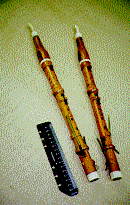
- Two flageolets
- John Mason, ca. 1755
Bate Collection, Oxford, on loan from the Lloyd-Baker family.
These instruments, which have been passed on to descendants of the Sharp family (Lloyd-Baker), are those represented in Zoffany’s painting.
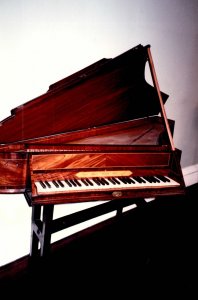
- Spinet by Neil Stewart (Edinburgh, 1784)
- The Russell Collection of Early Keyboard Instruments
[click on the picture to enlarge it]
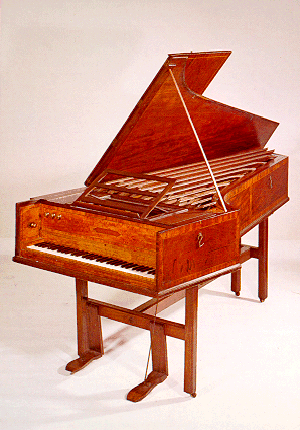
- Harpsichord
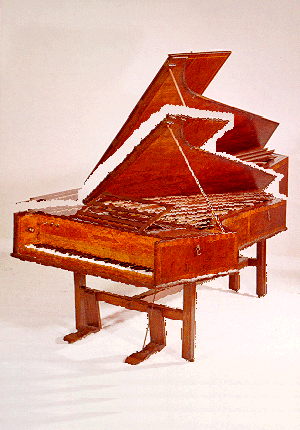
- Harpsichord
The keyboard played by Mrs. Prowse might be a harpsichord (right)
but it seems shorter and it might therefore be identified as a spinet (left).
However, it might be a harpsichord shown in “foreshortening” (emphasised perspective effect).
